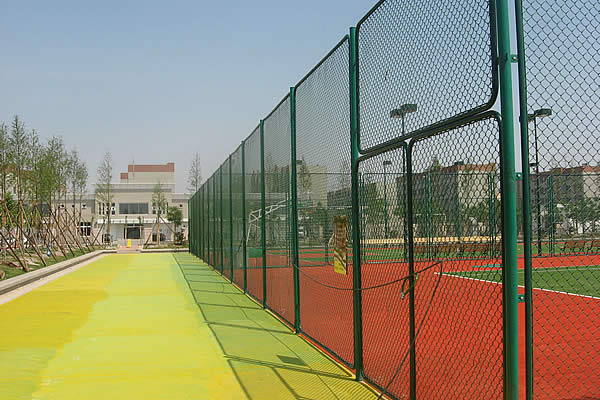 TEL:
+86-13102802206
TEL:
+86-13102802206
 Email:
fencenetting@china.com
Email:
fencenetting@china.com
 Language
Language
 TEL:
+86-13102802206
TEL:
+86-13102802206
 Email:
fencenetting@china.com
Email:
fencenetting@china.com
 Language
Language


The Symbolism and Practicality of Barbed Wire Posts
Barbed wire has long been a defining feature of the American landscape, epitomizing both the spirit of the frontier and the harsh realities of land ownership. Among the many components that make up a barbed wire fence, the barbed wire post serves as a crucial element, embodying a blend of functionality and symbolism. This article explores the significance of barbed wire posts, their applications, and the broader implications they carry.
Barbed wire itself was invented in the late 19th century, a period characterized by rapid expansion and the need for effective fencing solutions on ranches and farms. The introduction of barbed wire fundamentally changed the way land was divided and property was secured, making it easier for settlers to establish boundaries and protect their livestock. The posts that support this fencing are often forged from materials like wood, steel, or concrete, each providing different levels of durability and resilience.
Traditionally, wooden posts were the most common choice, as they were readily available and easily manipulated. These wooden posts often tell a story of their own—weathered by time and the elements, they stand as silent sentinels of the land, witnessing the passage of seasons and the changes in the surrounding environment. Over time, however, many ranchers began to favor steel or concrete posts due to their longevity and robustness, especially in regions where the harshness of the weather could quickly degrade wooden structures.

Beyond their practical applications, barbed wire posts also carry significant symbolic weight. They mark the boundaries of private property and serve as a reminder of the individual versus the collective in society. The act of fencing off land can be seen as a manifestation of ownership and control, illustrating humanity’s desire to tame nature and exert authority over it. In this way, barbed wire and its accompanying posts reflect the complex relationship between humans and the land, encapsulating the dual themes of security and separation.
In literature and art, barbed wire posts often appear as symbols of constraint and confinement. Writers and artists use these images to evoke feelings of isolation and detachment, reflecting broader societal issues such as the struggle for freedom and the challenges of belonging. The stark, unyielding appearance of barbed wire can evoke a sense of tension—between nature and civilization, freedom and restriction. This layered symbolism invites a deeper exploration of the human condition, prompting questions about what it truly means to be free.
Moreover, the use of barbed wire posts has evolved far beyond agricultural purposes. In contemporary contexts, they also serve as markers of exclusion and division, particularly in political and social discourse. In many parts of the world, barbed wire fences are employed to demarcate borders, often leading to heated discussions about immigration, security, and human rights. These posts stand as physical reminders of political tensions and societal divides, reflecting ongoing struggles between different groups.
In conclusion, barbed wire posts are more than mere physical structures; they encapsulate a richness of meaning and history. From their practical applications in agriculture to their symbolic representations of ownership, division, and constraint, they provide a fascinating lens through which we can examine both individual and societal narratives. Whether standing silently in a field or forming the boundaries of nations, barbed wire posts are a striking reminder of the complexities inherent in human relationships with land, freedom, and each other.